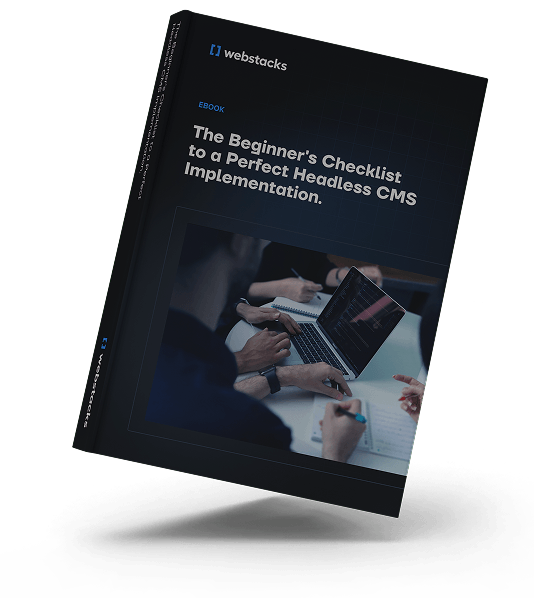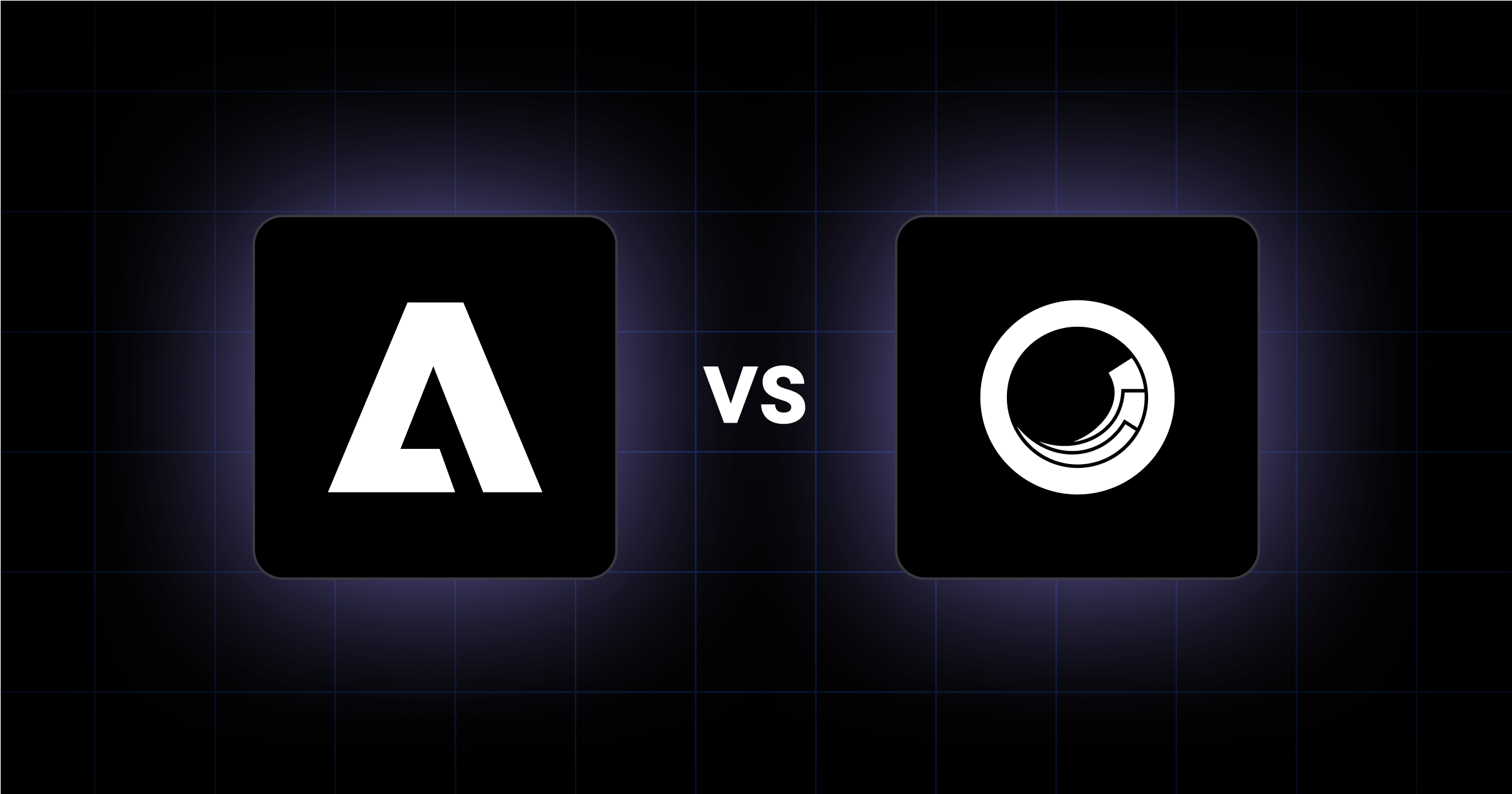When B2B companies outgrow their CMS, the problem is usually about friction.
Publishing workflows are slow. Personalization is limited or disconnected. Development teams are stretched thin. And scaling content across regions, products, or platforms feels more like duct taping than true digital strategy.
If you’re comparing Adobe Experience Manager (AEM) vs Sitecore, you’re likely rethinking how your team manages content, delivers personalized experiences, and supports long-term growth.
Webstacks’ web development team has helped marketing, digital, and engineering teams navigate this exact choice. Some come from legacy CMS platforms like Drupal or WordPress. Others are modernizing homegrown systems that can’t scale. The common thread? They need a CMS that aligns with how their team operate —and where their business is headed.
This guide breaks down AEM vs Sitecore through that lens. We’ll focus on what really matters to enterprise teams: team velocity, stack compatibility, personalization depth, and readiness for composable architecture.
What’s Your Core CMS Challenge?
Before you choose between AEM and Sitecore, it’s worth asking: What’s actually driving this decision?
In our work with enterprise marketing and digital teams, most CMS migration efforts start with one of these challenges:
“Our publishing workflows are too slow.”
Marketing wants to launch pages and campaigns quickly but they’re stuck waiting on developers, navigating complex approval chains, or managing disconnected tools across teams and regions.
“We can’t scale personalization effectively.”
There’s pressure to deliver tailored content by region, persona, or funnel stage. But data, content, and delivery aren’t working together.
“Our dev team is spread too thin.”
Engineering resources are focused on product and the CMS has become an operational burden. Teams want a platform that’s easier to maintain and evolve.
“We’re locked into a vendor ecosystem that doesn’t fit.”
Whether it’s Adobe or Microsoft, or something custom-built, some teams are constrained by tools that made sense 5 years ago, but now block innovation.

A Quick Look at AEM vs Sitecore
At the enterprise level, choosing a CMS means aligning with an entire ecosystem. Both AEM and Sitecore offer robust digital experience platforms (DXPs), but they come from different origins, serve different technical philosophies, and are modernizing at different speeds.
AEM
AEM is part of the broader Adobe Experience Cloud suite, and it’s engineered with large, global enterprises in mind. Particularly those operating at scale with complex content, digital asset management, and brand governance needs.
Built on a Java foundation, AEM has traditionally been a monolithic platform.
That said, Adobe has made significant moves toward cloud-native and headless architecture with AEM as a Cloud Service, introducing features like Experience Fragments and GraphQL APIs to support more flexible delivery models.
AEM’s real strength lies in its ability to centralize and standardize content workflows across teams, markets, and channels. It integrates with tools like Adobe Analytics, Target, and Creative Cloud, making it a natural fit for organizations already embedded in the Adobe ecosystem. This makes it especially well-suited for multinational brands managing multilingual sites, shared content libraries, and extensive design systems with centralized oversight.
But that power comes with tradeoffs. AEM implementations can be complex and resource-intensive. The platform often requires specialized development talent, and teams need to be ready to commit to Adobe’s product vision and pricing model.
Sitecore
Sitecore, originally known for its .NET-based CMS and personalization engine, has aggressively evolved into a modular, composable DXP that’s gaining traction with teams looking for modern flexibility.
Historically a traditional CMS, Sitecore has reinvented itself in recent years with offerings like Sitecore XM Cloud, Content Hub, Personalize, and CDP. These are designed to give enterprise teams more freedom to assemble best-of-breed solutions while still maintaining tight integration across the stack.
If AEM represents the suite-first approach, Sitecore is leaning hard into composability. It plays well with Microsoft environments, supports flexible hosting options (on-prem, hybrid, SaaS), and empowers technical teams to model, manage, and deliver content using modern architectures.
Sitecore is good at real-time personalization and data-driven marketing. With the power of xDB (its customer data layer), marketers can tailor content based on behavior, history, and profile data, without heavy IT intervention.
And while Sitecore is still modernizing parts of its stack, it offers a smoother transition path for teams that want to go headless without tearing everything down at once.
Four Decision Factors for Enterprise Teams
Here are four questions that help enterprise teams when making a decision between AEM and Sitecore:
1. How Complex Are Your Content and Asset Workflows?
If your company manages dozens of brands, regions, or product lines, AEM has the edge. Its integration with Adobe Assets (DAM) and Experience Fragments allows teams to centralize content production while still localizing experiences for different markets.
Versioning, reuse, and localization workflows are mature and built for scale.
Sitecore supports structured content as well, but typically with more developer involvement.
While Sitecore’s Content Hub is evolving quickly as a DAM solution, AEM’s built-in asset management still offers more native functionality for global teams managing large-scale media libraries.
If you have a centralized content ops function supporting multiple digital properties, AEM’s structure is likely a better long-term fit.
2. How Critical Is Personalization to Your Strategy?
For companies investing heavily in customer experience and segmentation, Sitecore stands out. Its personalization engine allows for real-time audience targeting, behavior tracking, and persona-driven content delivery across channels. This can be done without requiring developers to step in every time a segment is updated or a new rule is launched.
AEM offers powerful personalization as well, but it’s largely tied to Adobe Target. If you’re already using Target or Adobe Analytics, this can be a strength. But it also means personalization lives in a separate tool.
Sitecore’s approach is more tightly integrated into its core platform, giving marketers more control in one place.
If personalization is central to your digital experience strategy and your marketing team needs to own it, Sitecore offers more flexibility out of the box.
3. How Does Each Platform Fit Into Your Current Stack?
If your organization runs primarily on .NET and Microsoft Azure, Sitecore fits more naturally. Its APIs, integration tooling, and developer experience are tailored to Microsoft environments.
Sitecore is also moving faster toward composability, giving technical teams more control over how the CMS fits into a broader ecosystem of services.
On the other hand, if you’ve already standardized on Adobe tools such as Creative Cloud, Adobe Analytics, or Campaign, AEM can unify your marketing stack with native integrations.
For creative-heavy organizations, the ability to connect design, content, and analytics workflows within one vendor ecosystem is a significant advantage.
The right choice here comes down to your existing tech investments and how committed you are to staying within a single vendor ecosystem.
4. What Does Scaling Look Like for Your Team?
Sitecore gives teams the flexibility to scale modularly.
If you want to start with just a CMS, then add personalization or CDP capabilities later, Sitecore’s modular approach is a plus. It allows for incremental rollout and gives IT teams more control over architecture and implementation phases.
AEM, by contrast, offers more centralized control at scale, especially for enterprises managing global brands. Its multisite management capabilities make it easier to enforce governance across teams and regions. But scaling in AEM often means scaling within the Adobe world, which comes with complexity and cost.
If you're looking for a tightly integrated experience across a large, distributed organization, AEM wins. If you're optimizing for flexibility, Sitecore is often the more nimble option.
Is AEM or Sitecore Better for a Headless, Composable Future?
As more enterprise teams shift toward composable architecture, the ability for your CMS to integrate flexibly and deliver content to multiple frontends is no longer a nice-to-have. It’s foundational.
Both AEM and Sitecore have monolithic roots, but they’re modernizing at different speeds and in different ways. Here’s how they compare:
Sitecore: Composable by Design
Sitecore has aggressively restructured its product roadmap around composability. With Sitecore XM Cloud, Content Hub, Personalize, and CDP, it now offers a full suite of modular services that can be deployed together or independently.
This modularity makes Sitecore a great choice for teams embracing:
- Headless content delivery (via APIs)
- JAMstack or frontend-framework websites (Next.js, React, etc.)
- Cloud-native deployment and flexible hosting
- Best-of-breed tooling (CDPs, DAMs, marketing automation)
With Sitecore, your architecture evolves with your business. You can adopt services gradually, without a full replatform and without getting locked into a monolith.
AEM: Moving Toward Composability, But Still Suite-Centric
Adobe is modernizing AEM with AEM as a Cloud Service and support for GraphQL APIs, Experience Fragments, and hybrid delivery models.
But in practice, most AEM implementations still operate within Adobe’s broader suite, and the platform continues to favor tightly coupled integrations.
Headless is possible but it’s often layered on top of traditional authoring workflows. This works well for teams that want to preserve legacy publishing models while experimenting with new channels, but it’s not as nimble as Sitecore’s service-first architecture.
AEM fits best for organizations that are:
- Committed to the Adobe stack (Analytics, Target, Creative Cloud)
- Building centralized digital experiences, not composable ecosystems
- Comfortable with a more suite-driven model, even in a cloud-native world
Budget, Team Skillsets, and the Hidden Costs
When comparing enterprise platforms like AEM and Sitecore, sticker price is just one part of the equation. The real cost comes from implementation, maintenance, training, and how efficiently your team can actually operate within the system.
AEM Comes With Higher Cost, Higher Commitment
AEM typically requires a higher upfront investment, both in licensing and in implementation. Organizations also need to account for specialized development and support talent, since AEM is Java-based and deeply tied to Adobe’s ecosystem.
Costs to consider:
- Licensing for AEM and other Adobe Experience Cloud tools (Target, Analytics, Assets)
- Implementation and customization (often requiring Adobe-certified partners)
- Ongoing costs for training, dev support, and internal onboarding
- Infrastructure costs (if not using AEM as a Cloud Service)
That said, for global enterprises with large digital footprints, these costs may be justified by the platform’s governance, brand control, and integration with Adobe’s creative and analytics stack.
Sitecore Provides Flexible Spend, Modular Scaling
Sitecore offers more pricing flexibility, especially with its move to a composable model.
Teams can start with a single service (e.g. CMS or personalization) and layer on others as needed. This modularity also gives companies more control over how and when to invest.
Because Sitecore is built on .NET, it can be easier to staff and maintain.
Costs to consider:
- Licensing varies by product (Sitecore XM Cloud, Content Hub, Personalize, etc.)
- Implementation costs are still significant but often more incremental
- Easier to phase in functionality over time vs. committing to an entire suite upfront
- Dev talent is more widely available and often more affordable
If you're looking for a modern CMS with enterprise power but more cost control and stack flexibility, Sitecore may offer a better long-term ROI.
Still Evaluating Other CMS Platforms?
Not quite sold on AEM or Sitecore?
Many of the enterprise teams we work with are also exploring multiple paths before committing to a platform. Some are comparing all-in-one DXPs. Others are moving toward a composable stack.
Here are a few platforms we frequently see in the evaluation mix:
- Contentful – API-first and developer-friendly; great for teams embracing composability and omnichannel content delivery.
- Sanity – Schema-driven and fully customizable; ideal for teams with strong dev resources and complex content models.
- Builder.io – Focused on visual editing with headless flexibility, often preferred by marketing-heavy teams.
If you’re early in your replatforming process, start with our guide to implementing a headless CMS to know what to expect if you go down this path:

Choose the CMS That Aligns With Your Strategy
As a final tip, pick the platform that fits your content operations, team structure, tech stack, and long-term digital strategy:
- Choose AEM if you're already embedded in the Adobe ecosystem, managing complex brand governance across multiple regions, and need tight control over enterprise content and assets.
- Choose Sitecore if you're moving toward a composable architecture, want real-time personalization at scale, and prefer modular adoption with more flexibility in how you grow.
Webstacks has helped B2B companies evaluate and implement both. If you're still navigating this decision or planning a CMS migration, we can help you make the call with confidence.





